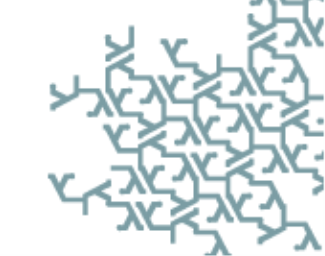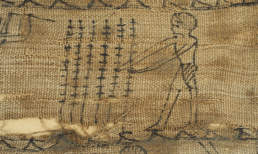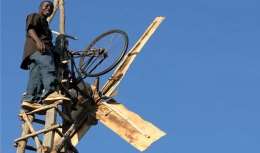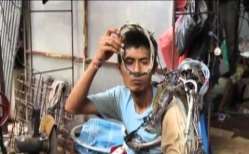Can Poor Students be Creative with Limited Resources?
Â
Can poor students be creative and successful on limited financial resources?
 Author:
Author:
Ernesto Mateo Quizhpe M.
Yachay-Ibarra
2016
Abstract
When you read this draft notice content about how the need influences for the development of creativity, even of intelligence. Do the students are capable of performing technology in a very creative way?
Do you need to have the money or the support of materials? The reason that has developed this project is to respond to these questions the methods used for the development are by means of web pages, appointments to books, use of articles. In addition one of the primary objectives is to demonstrate the usefulness of the creativity in difficult situations for the people.
History has not shown that anything is possible in any place, man has always been able to adapt. The greatest example and most famous is the city of Egypt, as in a desert place and airy managed to build a great empire. Egyptians were able to build an architectural wonders only based on the experience of their ancestors and the mathematics that they left them. Also, Japan is one of the fastest achievements because after so much devastation and many rubble managed to rebuild cities and towns, improved their economy as never before.
Is justified and argues why education does not help the creativity, is more appeases. But there are other solutions that is using the educational systems of Finland, considered the best in the world. And taking as an example to the young William that from small began to create your electrical mill, it is clear that every human being can perform thousands of thing without having to wait for a financial support.
And, the case more surprising is the Mayan who using only their basic knowledge to transform their sedentary lifestyle to something functional, to perform their own prostheses robotics.
Can poor students be creative and successful on limited financial resources?
Capitulate I; introduction
“Men who are accustomed to worry about the needs of machines, become insensible to the needs of men.”-Isaac Asimov
When read the article, it has the results obtained after conducting qualitative research. It demonstrate that it is possible to make inventions with scarce materials. As other objectives is to learn that different things made poor people, without any economic support, to create things that help society. People have all wondered, how is it possible that there are people who without having gotten so far? Some would say that it was because they were born as geniuses or with extraordinary ability but nevertheless had no support, as the case of the electro mill made by Mr. Kamkwamba, which we will discuss in the essay.
 The whole system that governs us is structured so that we are workers instead of creating new inventions, have convinced all students that you need large sums of money to do great things It is for this reason that the subject is directed to the study of the people who were able to realize technologies or objects in an economic situation of poverty. The theme is addressed to all the people who consider it necessary to have a large amount of income to invent just one thing. When creativity comes out of nowhere, society only needs a brush and a canvas to create a work of art. But they will wonder: how is it possible that of a simple need we could generate so many solutions? The society of consumption has generated deep cultural changes, which have emptied of content, terms and concepts, which previously were of easy handling for the common one of the men. In effect, after the Second World war the image of the man suffered a symbolic mutation, and the majority of the human beings was turned into ” the needy man ” (Iván Illich).
 In this category there were included, to less, two third parts of the inhabitants of the Earth. This way, we accept that our condition humanizes defined out by the dependency on goods and services; dependency to which we call need. Said otherwise, we subordinate ourselves to the economy and technology that we ourselves have created and developed. Indeed, poor students can be creative and successful on limited financial resources, because first, out of necessity, man`s creative abilities tend to increase; second, from the beginning of man`s existence, humans have been creating objects with limited resources; and third, there are many cases of modern devices created with limited materials.
Capitulate II; body
 First of all, students from schools with few resources or of poor households are capable to be very creative and successful with the resources they have at their disposal. That is why this research mentions a very exceptional case, which appeared in the newspapers of Malawian in 2006. It is about a young man called William Kamkwamba, he is a prodigy exceptional since built a windmill to feed a small electrical network in a villa of Malawi with 60 families. In Malawi there is a lot of poverty and its economy is in decline, the only way in which remains is by tobacco, which depends greatly on its progress.
 William tells us about its history. His family is composed of 20 people, is a family very extensive. Mention that it was able to get to school because their parents did not have the money to pay for the studies. Something that was called the most attention was the wind that makes in Malawi and began to investigate about the wind energy.
 His first book was “using energy”, this part is interesting, since the book does not have instructions on how to assemble a mill electric, is more a book with pictures of windmills or engines of water, but nothing to say how to make them. Therefore, William only based on the images attempt to build your own mill electrical energy generator, the first had only a mill with three blades but later added another in the top so that the power is more stable. See (graphic 1).
 Andrew Carnegie says: “Capitalism is turning luxuries into needs” this is curiosity sentence, because no one speaks of the reality of the planet, as the system that governs us has made some people stopped thinking about what others need taking all the resources for them.
 This is how William helped families from the village of Malawi, since they had the habit of going to sleep at the time that the sun. But now can continue with its activities in the night which has helped to develop faster and keep growing as villa. This brief summary of the history of William Kamkwamba, is an example of the capabilities of human beings, and demonstrated that there is no need for a large amount of resource to make something of great utility. Always be ready to fulfill a need that is what makes us more able to solve problems and more skilled to create new problems, something ironic. But the most important thing is that the young William took their time and effort to help other people without requiring your help much less financial support.
 Secondly, there are some examples of the way in which the human being with the needs that has been having you have served to evolve. A great author in his book “the chance and necessity” mentions:
 “The livelihood of scientific objectivity from a structural order in the molecular dimension of the genetic code, but at the same time is not subtracted to a world conventionally accepted as human creation and effect of the development of the pre-training specifies the man, the symbolic language, a unique event in the life, which opens the way to other developments, creator of a new kingdom, culture, ideas, knowledge. It adds, however, that this power of symbolize articulated has been able to rely on modifications neuromotor “. (Monod pag. 142).
 A phrase very beautiful although a little complicated to understand. In short words he refers to as the needs that have taken our ancestors we have shared with us. This defends it by saying that, the DNA of each cell transmit to us the memories, knowledge, experiences that have lived our ancestors. But what in fact allowed them to evolve and we have shared with us, was to find a need in each place that were without having a single job object.
 An example, very well known, is the ancient Egypt. The first settlers escaping from the Sahara desert, travelled to the River Nile and was established as Egypt in the year 3100 B.C. They were the creators of great technologies that are well known today, among them are: glass, papyrus, woven, fabrics of flax, needles and mirrors of copper, wooden boats, oil lamps. Egyptians created from each need submitted to them, as the thread that needed to join fabrics for the most effective transport of food; or the transport in times of drought, needed the maritime trade to procure food.
Either, Japan after the Second World War made it to grow its economy in a very fast way. Once you have finished the Second World War, Japan was destroyed by bombs loops in Hiroshima and Nagasaki. There was a lot of poverty and death by starvation, as they did not have a way to distribute resources to those who were affected by the war. See (graphic 2).
 There is a very interesting history since, a small number of inhabitants on the outskirts of the two cities destroyed joined together to rebuild the forgotten that Toyota would for the war had been declared in bankruptcy.
 With few resources the Toyota brand reappeared and is gaining increasing importance as a producer of vehicles in Japan. Later, at the end of the years 50, the brand begins to make their orders in foreign markets. Thus, using parts of abandoned cars and tank that were in the cities contracted carts in mass. See (graphic 3)
 Japanese´s economy is fired by what other brands began to produce cars in the same way and were created brands like Suzuki, Honda, and Mazda. In this way Japan came out of the economic crisis that was happening.
 Thus, history teaches us, it is possible to reestablish itself after a disaster or to lack of resources. And it is very effective at the time of evolution as we mentioned Monod.
In added, there is much evidence that the brain of the child and adolescent functions in a manner very different from that of the adults, for example, they think much faster and are much more creative. As in the case of William Kamkwamba there are many cases of young talented that did great things without many goods. A recent case almost that became very popular Wayan Sumardana also known as the “Iron Man” of Indonesia. A father of a family had a stroke which immobilized all if right arm and difficult the form of work in its mechanics. Trying to find a solution to this problem, because he had to feed his wife and three children, he looking for a way to settle its paralysis left. He was a graduate of the college as mechanical only but never continued studies at the university, and with their basic knowledge of robotics decided to assemble their own mechanical arm.
 With Internet and something of scrap that he had in his workshop armor several prototypes that served as a test and after several attempts to do an arm that moves with just thinking about it. These cases are great examples of needs to the limit, and shows what you are capable of a lot of people only in situations of need. Here the young Wayan, made this arm bionic because I needed it and regardless of the money, the time or the lack of education or knowledge which it had, it was proposed to make the arm, because it was essential for their survival. See (graphic 4).
 It all depends on the perspective, from the point of view of students, is a matter of changing the way of teaching. It is proven that the schools restrict much the creativity of the students. But this is already changing and a clear example is in Finland. There students have the freedom to do what they like from small and are not limited with difficult subjects that they do not like it, and are not busy all the time in fact have only four hours of classes.
 This, according to Finland helps to relax the students and makes flow better new ideas. Education in Finland is considered the best in the whole world.
 The writer Monod said that “creativity arises when the comfort disappears and the art of the need governs us”.
 Students with a lack of extreme resource are the most creative, because they have already gone, to force, by situations in which needed to use all your brain to solve problems of life or death. The only limitation of the people without resources is the not wanting to do spectacular things. We already know several examples of people who took decision and initiative, not limited by the lack of resource.
Capitulate III; conclusion.
 For ending, to respond to the initial question, if it is possible to create great technologies with few resources to change the world. People are able to increase their creative capacity becoming challenges daily, or looking for a goal. It is better when the goal set by a person is aimed at helping someone else as is the case of William, because there is a commitment to the other. In some cases it is difficult to find a need that is need to fulfill, this is due to the fact that we are very happy with what we have.
 Students are like an airplanes, with the appropriate momentum can reach rise very high. History has taught us that crossed the times we have been in wars and conflicts. But always depended on each civilization so that it can emerge from the rubble. It is not always necessary to a support on the part of a government to the state on exit, is one of the principles of Marxism.
 Schools, colleges and universities help students as a guide to know by where follow the path to innovation. But at the same time they removed all the ability to be independent and think for themselves. The educational system in Finland is the most effective because it breaks with this scheme to limit students to do things that are “need”.
 As personal opinion, it is possible to make all the people of the world to express all their creativity and generate new technologies that help the world without the need to ask for large amounts of money. Has been checked with several cases as some staff have made changes without help.
Attachments


Graphic 1: William Kamkwamba on                        Graphic 2: Tissue line by Egyptians                   his windmill


Graphic 3: Hiroshima after bombs attacks                Graphic 4: Wayan Sumardana improve                                                                                                                         in 1945                                                                        his bionic arm
Keywords
Marxism: the political, economic, and social principles and policies advocated by Marx; especially : a theory and practice of socialism including the labor theory of value, dialectical materialism, the class struggle, and dictatorship of the proletariat until the establishment of a classless society.
Papyrus: Is a widely available typographic font designed by Chris Costello, a graphic designer, illustrator and web designer.
References:
BBC. (2016). ‘I’ve been obsessed with machines since I was a child’. December 18, 2016, de BBC Sitio web:
HÃades Galán. (2014). Capitulate VIII. “En Los pobres de mi tierra: Conciencia social” (pag. 67). Colombia: Universal global de ediciones.
Jacques Monod. (1971). “En El azar y la necesidad” (pag. 19). Francie: Les Éditions du Seuil.
Sarah Childress. (2007). “A Young Tinkerer Builds a Windmill, Electrifying a Nation”. December 17, 2016, de news’s Malawi website: